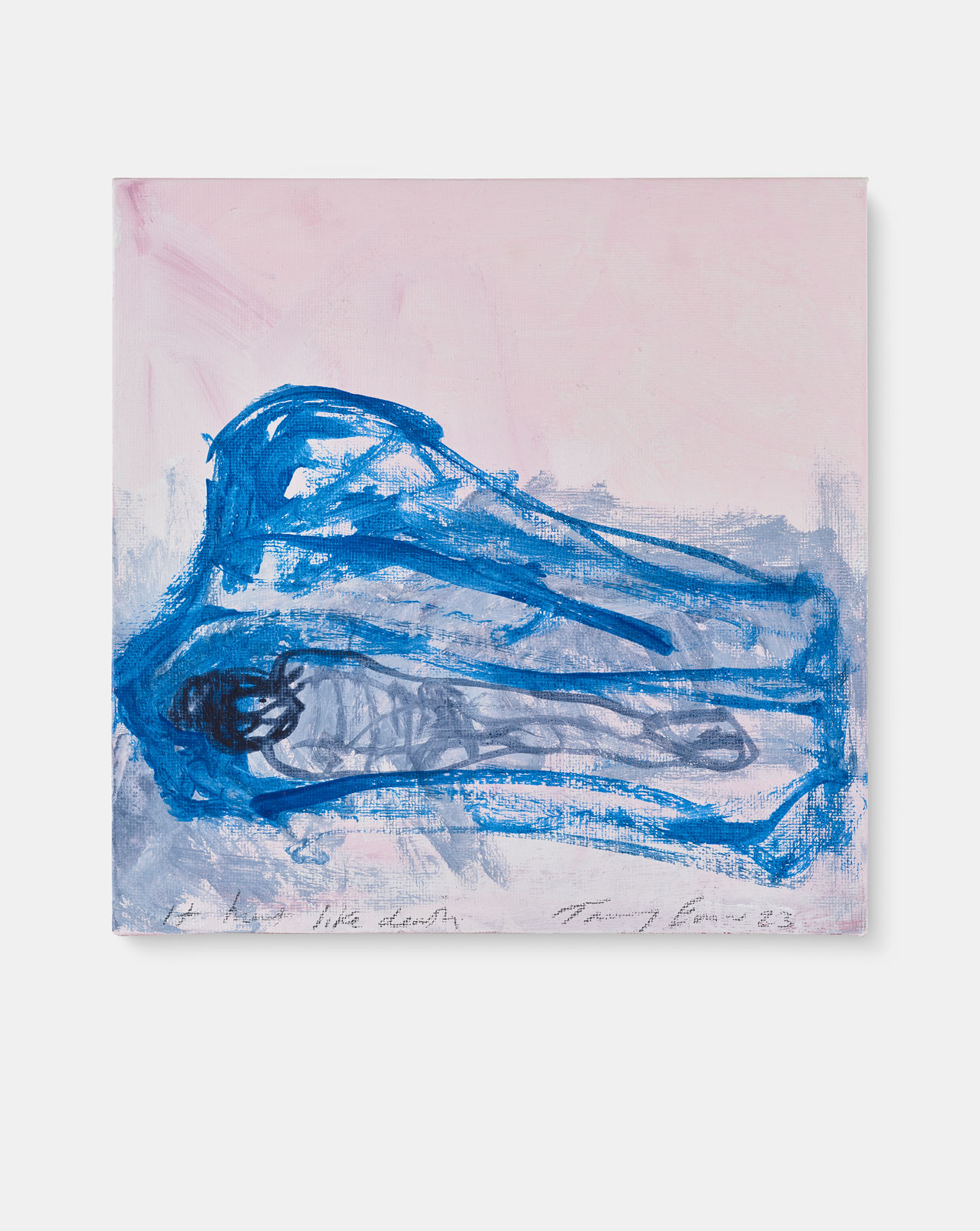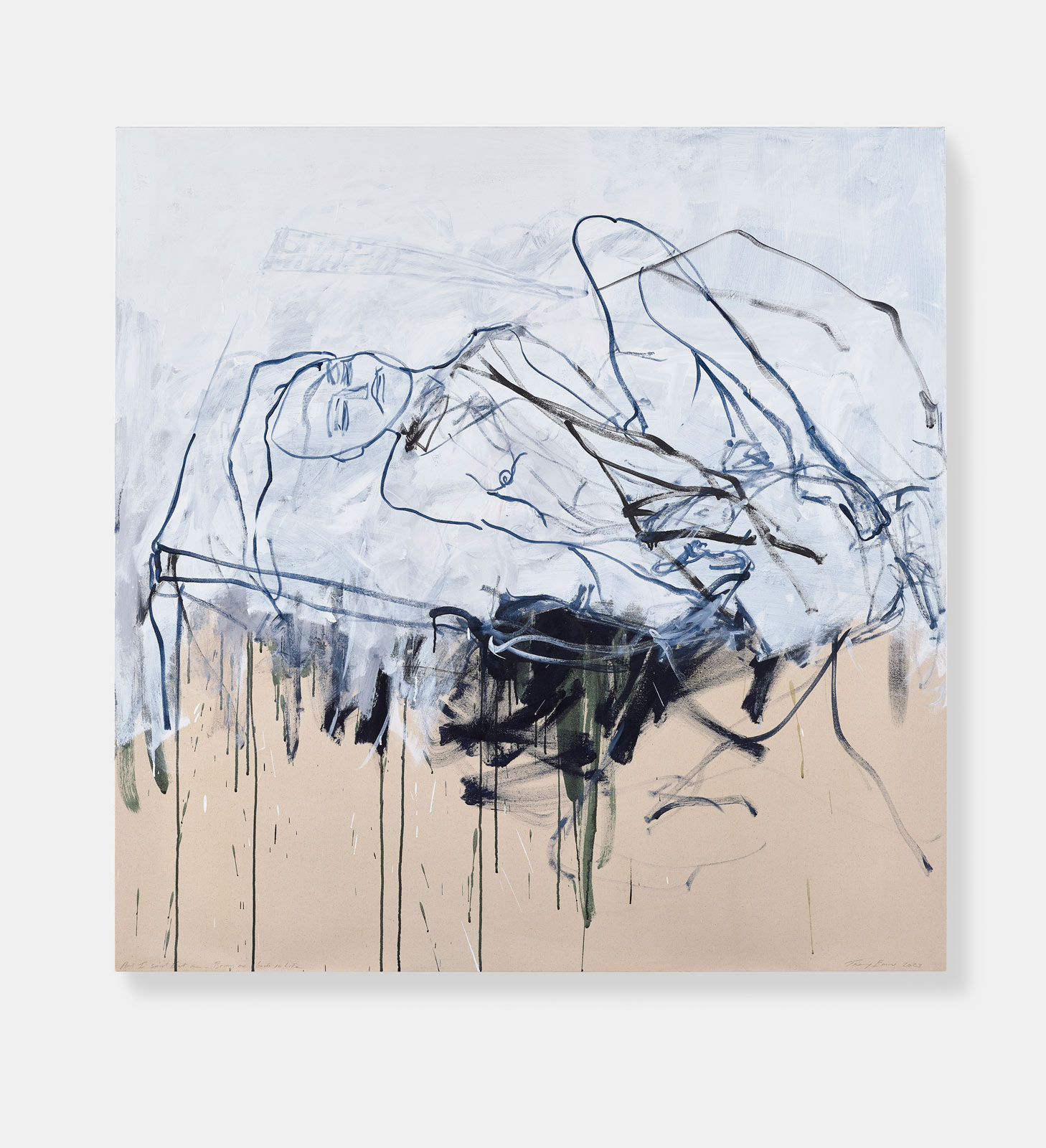On view at White Cube, the artist’s latest exhibition grapples with mortality and marks her return to New York
“Every time I come to New York, I cry,” says contemporary artist Tracey Emin. The source of her tears lies in the span of the journey from her home in Margate to the island of Manhattan, instilling a sense of melancholy she considers unplaceable. “I cry because I’m sad, but never as sad as I was before.”
After eight years, Emin has returned to New York for a show at White Cube, a buzzy contemporary gallery housed on Madison Avenue. Lovers Grave features 26 works, ranging from massive canvases depicting couples in the throes of lovemaking, to smaller, scrawly tableaux of figures lined up before gravestones, to a bust of Nefertiti, the ancient Egyptian queen. The exhibition presents new questions around the subject of intimacy: What does it mean to die in the arms of someone you love, immortalized like a couple who perished in the eruption of Pompei? What of the singular lover painted orange in Is Nothing Sacred, who finds herself supplicated before a dark presence in her room, like an impending reaper?
Emin joined Susan May, Global Artistic Director of White Cube, to muse on the themes behind the show. When probed about the hidden text in the bottom corners of several of her works, the artist answered plainly, if a bit cryptically: “If there’s a painting without a title, it isn’t.” Each of Emin’s canvases is announced within its margins, so viewers may look deeper at the ideas of the scene before them. The Beggining and The end of Everything is misspelled, working in tandem with the haphazard application of paint, dripping down the eight-foot behemoth; a female figure reclines on a mattress that doubles as a shallow grave, somewhere between relaxation and expiry, the contours of the two near indistinguishable.
Emin was inspired by the freedom of starting over. “When I first had the idea for Lovers Grave,” she said, “I did the most fucking spectacular, amazing, Joan Mitchell, de Kooning, wild figurist painting. And I [ended up] painting over it, because I felt it wasn’t really me. What came out was, I wanted you to fuck me so much, I couldn’t paint anymore. And that was the end of it.”
This sentiment grows more salient in considering the artist’s recent brush with death—a bout of bladder cancer thought to be terminal, until an invasive surgery turned things around, leaving the artist with a stoma and urostomy bag. The illness pushed Emin to put brush to canvas. Lovers Grave coils around adoration, loss, and mortality with sentimentality—merging power, fear, and acceptance within a single timeline. In Emin’s own words: “Art is holding hands with all of this history.”













